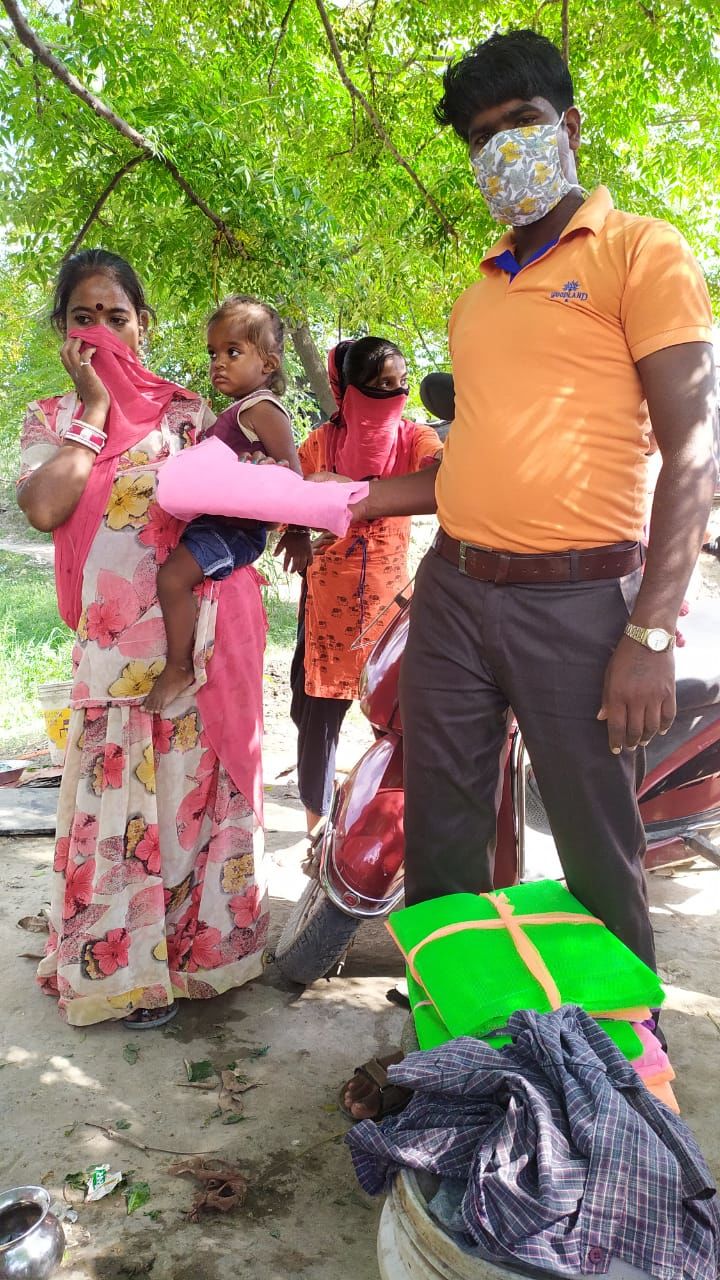Mosquito Net Distribution
The issue
The monsoons typically bring about a spike in cases of dengue, malaria, chikungunya, and other vector-borne diseases. This community is particularly vulnerable for a few reasons:
-
Proximity to a water body; specifically, this community sits on the banks of the Yamuna River
-
Households residing in huts or katcha houses that do not provide adequate shelter from the outdoors

-
Lack of other means of protection: from our ‘census’ survey, we found that 99% of households do not have a mosquito net or use a broken one. We have seen instances where households use thin sarees as an alternative, but this is ineffective.
-
High volume of infants; 35% of households have at least one child under the age of 5, totalling 712 children in the community. Infants and pregnant women are thought to be the most vulnerable groups for malaria.
Even without the rains, getting bitten by mosquitos through the evenings and nights is a common affliction for residents. A recent J-PAL study showed that the urban poor face significant barriers to quality sleep, which can have consequences on productivity, decision-making, health and quality of life.
What we did
Insecticide-treated bednets are well established as the safest and most cost-effective way of preventing the spread of mosquito-borne diseases. It has also now been well established through several studies that free distribution is better for coverage and take-up than all other pricing or cost-sharing models (see here, here, here and here).
With the help of kind donations from over 50 individuals, we were able to distribute a total of 660 insecticide-treated mosquito nets free of cost. Below are some pictures from the distribution, and you can view a short video here.



Further details and thoughts
Procurement and funding
-
The process of identifying a vendor for the nets involved getting quotes from 5 different sources. Of those that met our threshold for quality (durable and insecticide-treated), our cheapest post-negotiation price was INR 284 per net (including 5% GST). The nets were purchased and picked up in 7 batches - you can see all the receipts here
-
We raised funds primarily through a campaign on Ketto.org. The total cost of all the nets was INR 1,87,110, of which INR 1,81,625 came from the fundraiser campaign. The rest was through individual Google Pay transfers.
Distribution
-
Most of the distribution took place between 31st August and 11th September 2020. Due to heavy rains flooding mud paths, we deemed it infeasible to deliver the nets to individual houses, and instead set up distribution points for each ‘block’ (you can see these block boundaries here).
-
Having seen enough examples of inclusion/exclusion errors from government schemes, we decided not to place any strict criteria for receiving a net. However, we did specifically encourage households with infants to collect one by reaching out to them using details collected from our census survey. Of the final 660 households that recieved a net, 350 had a child under the age of 5.
-
To document and track the distribution, we set up a digital data entry form to be filled for every net handed out. Where possible, recipients provided ID details (phone/Aadhaar/ration card) that would help match them to our earlier survey. For those that didn’t match, we collected their names and phone numbers. 24% of recipients didn’t match to our census data - we believe many of these were women who had returned post-lockdown and were thus missed in our survey.